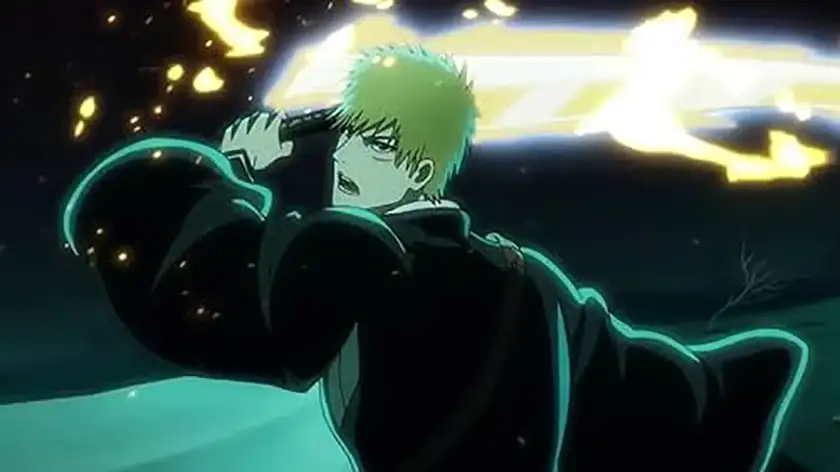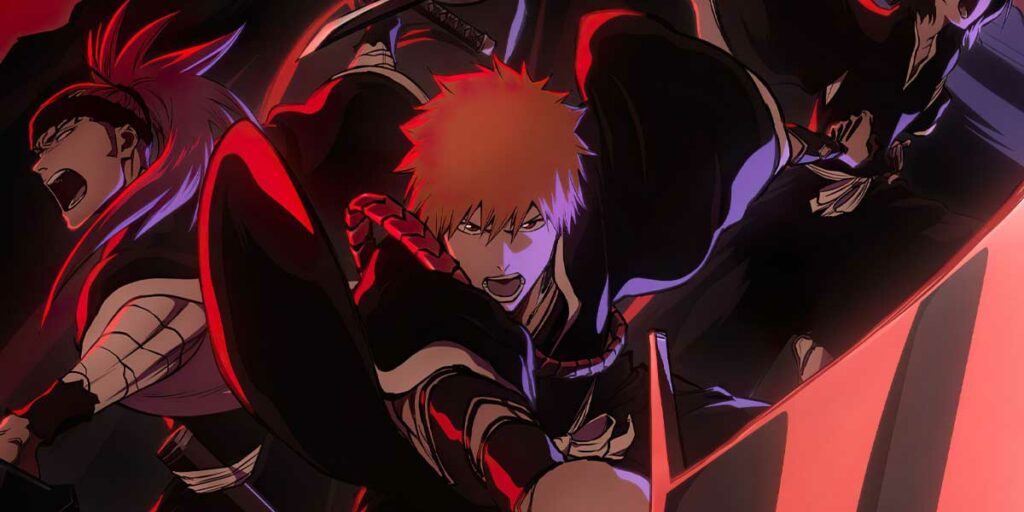Bleach: Thousand-Year Blood War is a return to form for the classic anime, taking what worked about the adaptation and elevating it.
When the original Bleach anime adaptation ended in 2012, it did so during the “Lost Substitute” arc, which cut the saga short by about one hundred chapters and did not even consider the final climax of the story. At the time, the manga’s future was uncertain and the story was in a state of limbo, meaning they had to stop where they were so as to not end things on a cliffhanger. Manga author Tite Kubo’s declining health left him unable to keep deadlines as the story rushed towards a confusing, muddled ending. General criticisms were the story was rushed and characters were derailed to the point where much of the audience stopped caring. People wondered what the anime would look like, or if there was even demand for a new season at all.
Years later, and at last the final battle hits the screens. With the original cast and studio, it is a direct continuation of the old show with all its core elements intact. However, since the arc in the manga is so flawed, the creators of the show decided to take some liberties. Bleach: Thousand-Year Blood War began, and it lived up to the hype. This grand finale storyline reintroduces the Soul Reapers in their battle against rival agency the Quincies, a totalitarian regime bent on world domination. Led by the evil Emperor Yhwach (Takayuki Sugoh), the entire Soul Society is thrust into an endless battle where it will take the power of everything they have learned so far to survive the Quincies. The continuing adventures of Ichigo Kurasaki (Masakazu Morita) go to some dark new places turning the world of Bleach upside down, and the fans are all here for it.
Many liberties are taken to the source, fixing issues like pacing and characters. For example, the character of Uryu Ishida (Noriyaki Sugiyama) takes his time to transition into the Quincy army, looking over his records and succumbing to the temptation of the emperor’s assistant Haschwalth (Yūichirō Umehara). In the manga, a single panel is all that is shown for his reveal with no explanation for his change of sides. Such development adds nuance to the conflict and depth to the character, showcasing the complexities of the war and questioning who is in the right.
Thousand-Year Blood War is much more serious than the rest of the anime. Most scenes are just continuous battles and new enemies arrive without warning. Beloved characters die, more blood is shown, and the main characters have to bend their morals in order to achieve their goals. As a grand final battle, this all makes sense and keeps the tensions going as the show builds towards a climax. Hundreds of chapters mean about five chapters of manga make up a single episode of the show. The pacing is much quicker now that the manga is finished, meaning the producers no longer have to wait for updates to avoid spoiling twists. With condensed pacing and a solid path ahead, this installment of Bleach knows where to go and how to get there.

This series is special in how much of it shows characters beyond the core cast we have come to know over the course of the original anime. While Ichigo, Uryu, Rukia (Fumiko Orikasa), Chad (Hiroki Yasumoto), and Orihime (Yuki Matsuoka) do still appear, so much detail is devoted to the rest of Soul Society as well. A conflict encompassing the entire supernatural world needs all hands on deck, and every episode showcases how big the world is, by allowing more characters to enter the fray and contribute their own abilities. The final episode of Season Two is a prolonged battle between Yhwach and the high priest Ichibe (Naomi Kusumi), pitting the society of the free against the mighty empire, in a battle equal parts cathartic and heart-rending. The main five are great, but they do not need to be the central focus all the time.
The animation has improved over the past decade. The aesthetic adds an extra layer of inking to give the illusion of a third dimension to the characters. Motion and expressions are captured with vivid movements and brilliant choreography as they dance along the screen, showing how far Studio Pierrot has taken its animation style after a ten-year hiatus. Each backdrop glows a radiant gray, showing the alien landscape in which the story is set. All these colors and added saturation give an otherworldly feel, adding to the surreal nature of the anime you are watching. This is amplified in the fight scenes where the colors pop and the movements are much more fluid. Everything in the original is turned to its maximum potential with this installment.
Bleach: Thousand-Year Blood War is covering the longest arc of the manga and is still ongoing as of this review. With all of these ingredients in place, the series seems like it is in the perfect position to right the wrongs of the past and provide the conclusion fans have wanted for years. Some of its flaws in pacing and diminishing character roles are from the manga, and can be tolerated in this medium as the tweaks make up for those in other ways like with action and dialogue. While this series does take time to find its footing, it is still impressive how it manages to balance the suspense of the manga with the pacing and storytelling of a new medium. For the non-manga readers, this is sure to impress as a visual spectacle and take advantage of the animated medium, while longtime Bleach followers are sure to be granted their due with a proper finale. Given the circumstances, it is a miracle anything else came from Bleach at all, and with a third season coming soon, it can only get better from here.
Bleach: Thousand-Year Blood War is now available to watch on digital and on demand.

